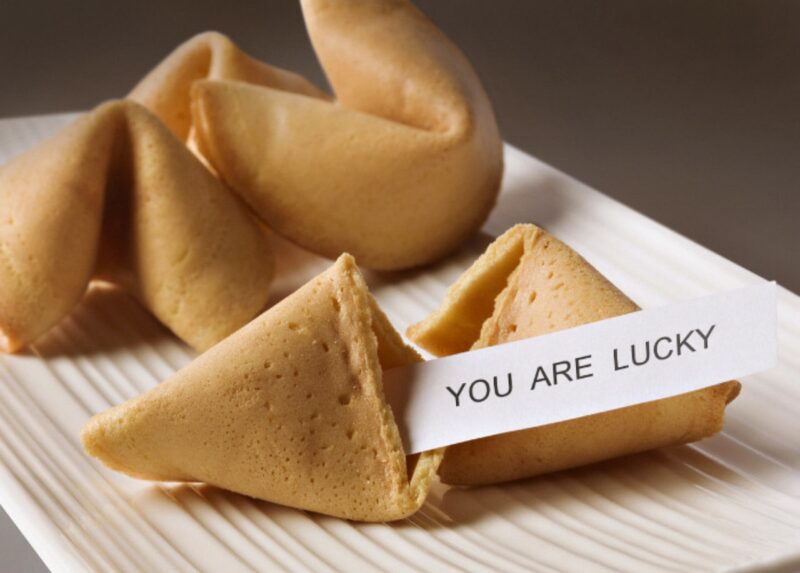The Surprising Story of the Fortune Cookie and Its Rise as a Cultural Icon
November 15, 2024

Fortune cookies, those delightful crispy confections filled with wise words or cryptic predictions, often served at the end of a meal in Chinese restaurants across the United States, have a surprisingly complex and fascinating history. While they are now considered a staple of American Chinese cuisine, their true origins and evolution raise questions about cultural identity, culinary fusion, and the surprising journey of this beloved treat.
1. The Origins of the Fortune Cookie
The fortune cookie’s roots are often mistakenly attributed to China, yet it is widely believed to have been invented in the United States during the early 20th century. Various theories about its origins exist, with claims from both San Francisco and Los Angeles.
In the 1890s, a Japanese immigrant named Makoto Hagiwara is said to have created a similar cookie called a “tsujiura senbei” which contained fortunes and was served in a Japanese tea garden in San Francisco’s Golden Gate Park. However, it’s important to note that these cookies differ from American fortune cookies, as they were made from a different recipe and didn’t have the distinctive shapes that we associate with fortune cookies today.
Another theory posits that in the early 1900s, Chinese immigrants began producing their version of Hagiwara’s cookie, which eventually became known as the fortune cookie. This was during a time when Chinese cuisine gained popularity in America, and the cookie added an element of novelty.
2. Rise to Popularity in American Culture
Fortune cookies gained traction in the 1920s and 1930s, thriving in the rapidly growing Chinese-American culinary scene. As people dined in Chinese restaurants, the fortune cookie quickly became a fun and whimsical way to end a meal. Its charm lay in offering diners a sense of intrigue and connection to their fates through the printed fortunes inside.
The turning point for fortune cookies came after World War II, as soldiers returned home and sought out the familiar comforts they had experienced abroad. The entertainment industry also played a role in popularizing the cookie; numerous films and shows depicted characters receiving fortunes inside these cookies, further cementing their status as a cultural icon.
During this time, the fortunes themselves began to evolve from traditional aphorisms to more humorous and light-hearted messages. This transformation reflected the changing societal values and the growing love for whimsical experiences.
3. The Composition of the Fortune Cookie: A Culinary Blend
The traditional fortune cookie ingredient list is relatively simple, consisting of flour, sugar, vanilla, and sesame seed oil, making it a delightful treat that’s both crunchy and slightly sweet. This harmony of flavors embodies the fusion of various cultural elements—largely representing Chinese culinary influence while embodying American innovation.
The fortune, typically printed on thin paper, encompasses positive and motivational sayings that encourage readers to perceive life from a spiritual or philosophical perspective. Over the years, the fortunes in these cookies have ranged from reflective quotes to amusing quips and everything in between. Even these messages:
- “You will find great luck in your future.”
- “A friend will bring you joy soon.”
- “Embrace new beginnings.”
These tiny slips of wisdom continue to spread humor, hope, and curiosity among diners.
4. Fortune Cookies in Modern Culture
Today, fortune cookies are not limited to Chinese restaurants. They have transcended cultural boundaries, finding their way into various settings such as parties, festivals, and celebrations. For instance, some people use fortune cookies as fun party favors, while others include them in gift bags for special occasions.
Fortune cookies have also found their place in popular media. They frequently appear in television shows, movies, and even social media, where their quotes are shared for fun and inspiration. The phrase “break open a fortune cookie” has become a metaphor for discovering unexpected truths or insights.
In recent years, the rise of personalized fortune cookies has also become popular. Businesses now offer custom cookies with fortunes tailored to specific events or brands, making them unique and delightful promotional gifts.
5. Debates and Criticism: Cultural Appropriation or Culinary Innovation?
Despite their popularity, fortune cookies are not without controversy. Some view them as a symbol of cultural appropriation, arguing that they misrepresent authentic Chinese culinary traditions. In contrast, others see fortune cookies as a hybrid creation that highlights the beauty of cross-cultural exchange.
Critics emphasize the importance of recognizing the nuances between cultural appropriation and cultural appreciation. While fortune cookies are not traditionally Chinese, they offer a bridge between cultures and celebrate culinary creativity. Advocates assert that the cookie is an emblem of globalization—showing how cultures can interact and inspire unique culinary experiences.
Conclusion: The Legacy of the Fortune Cookie
The journey of the fortune cookie from its obscure origins to becoming a staple of American cuisine illustrates the power of food as a connective force across cultures. It embodies the spirit of curiosity, creativity, and comfort, drawing diners into delightful moments of anticipation and surprise.
As we break open the crispy shell, we not only relish its sweet flavor but also engage in a culturally rich narrative that sparks conversations about identity, innovation, and the love for culinary exploration. The fortune cookie continues to promote joy and curiosity about the future, making it a cherished symbol of hope in a world increasingly interconnected.
Now, the next time you crack open a fortune cookie, take a moment to appreciate the fascinating story behind this beloved treat and what it signifies in our modern culinary landscape.








